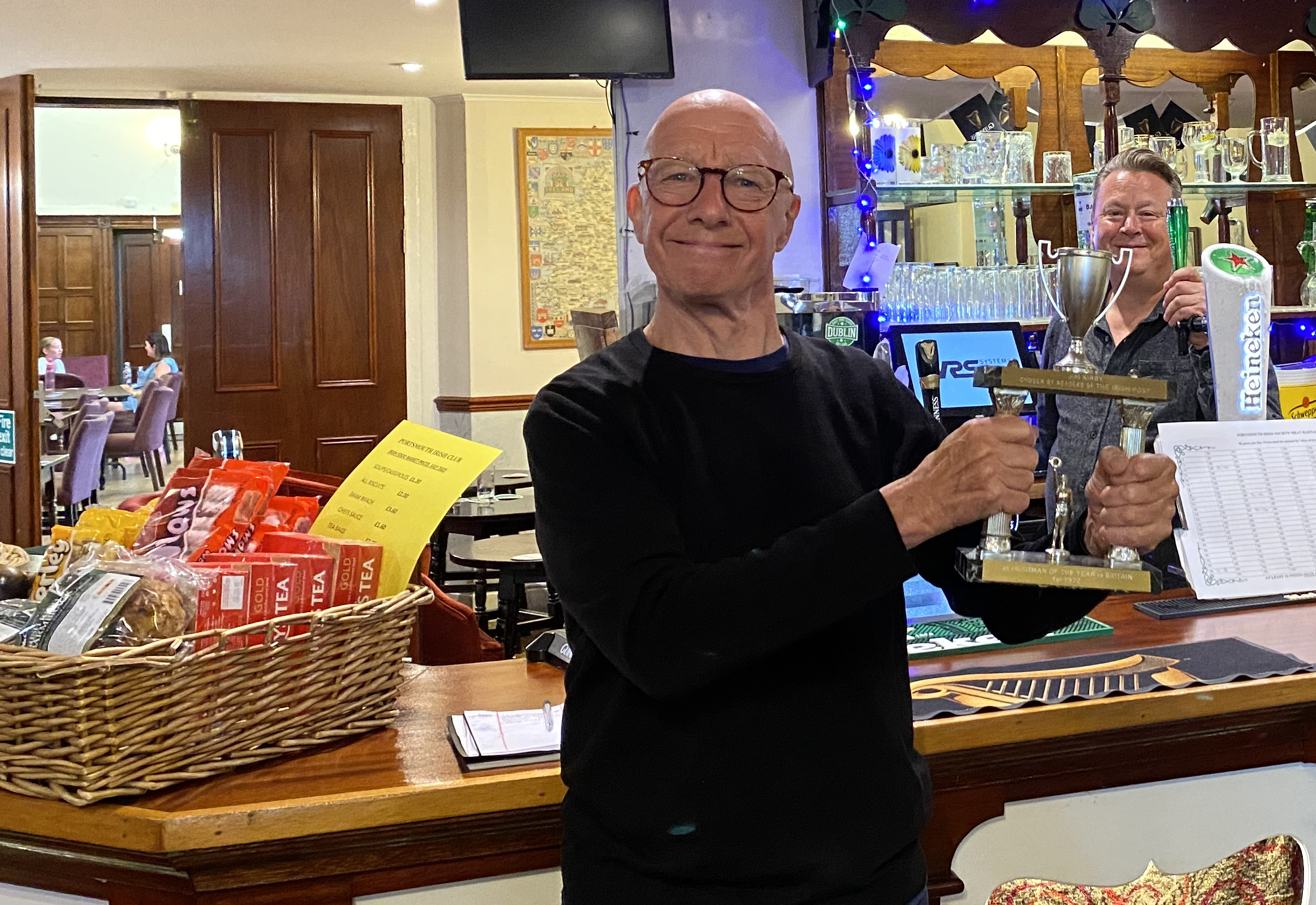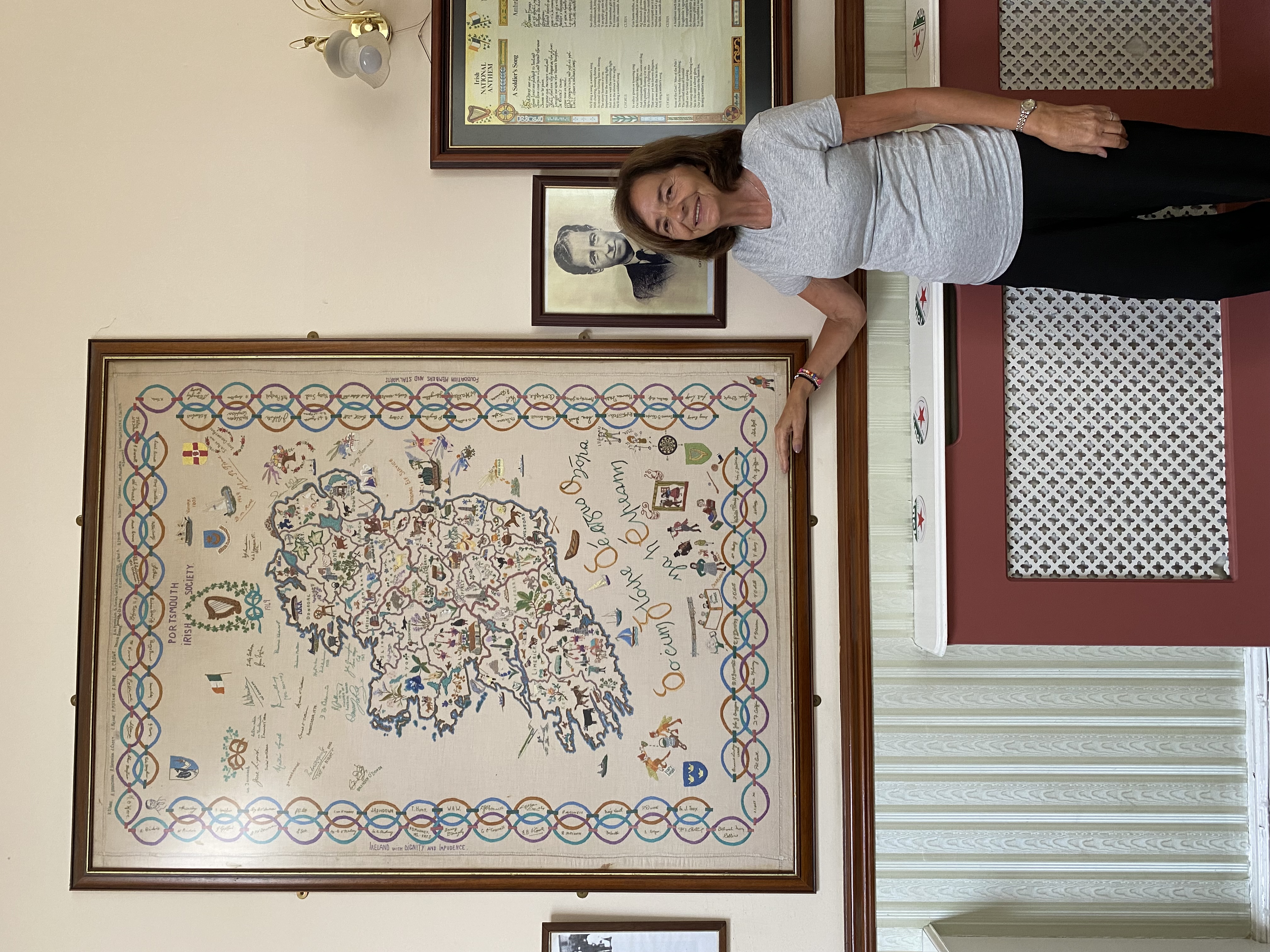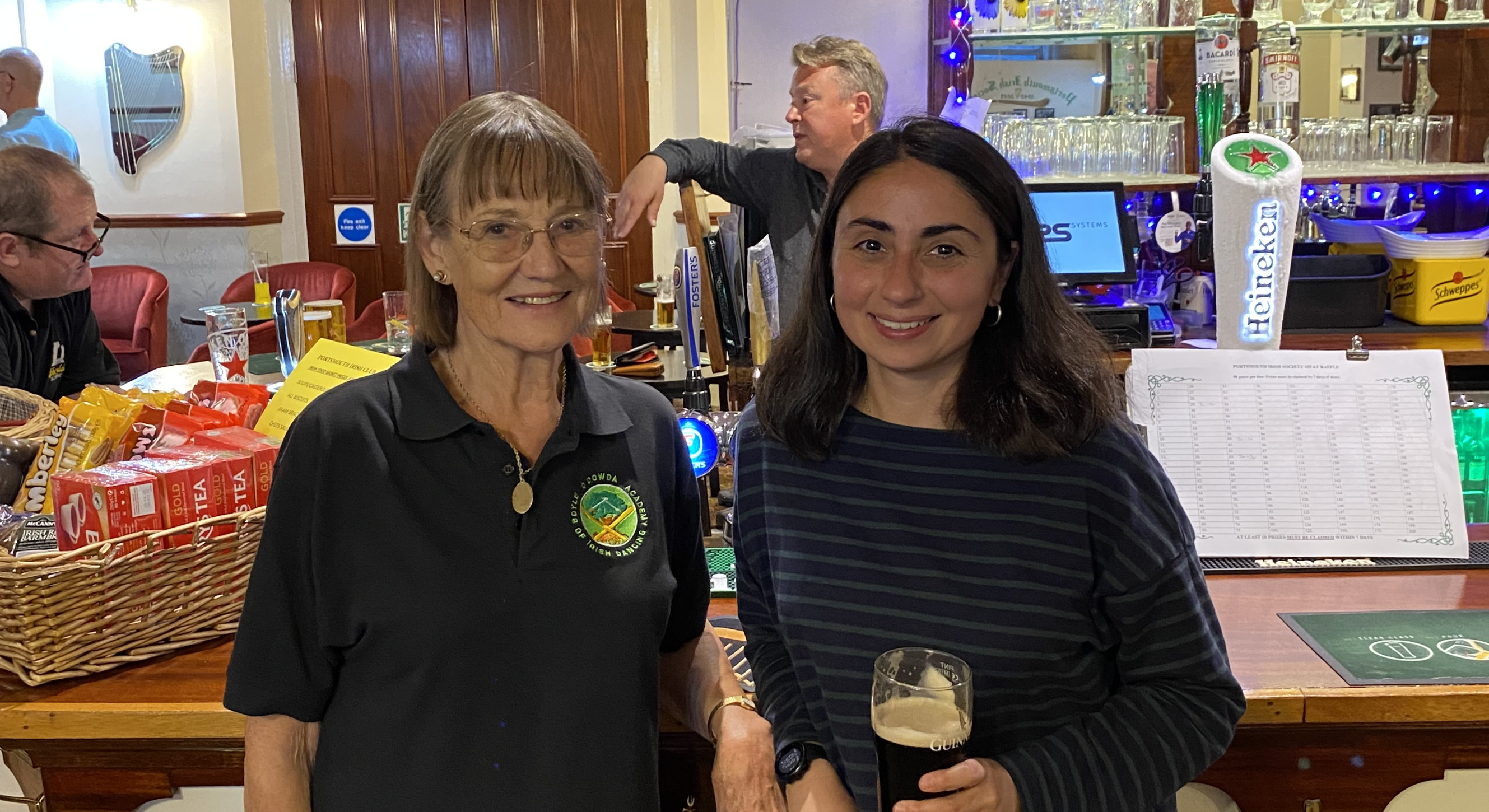Portsmouth may not have the largest Irish community in Britain, but it has certainly punched above its weight in its contribution to Irish community organising.
The Portsmouth Irish Society was founded in 1949, but its origins lie in the Portsmouth section of the Anti-Partition League. The Society was first housed in a church hall in Copnor, then a Trades Union Congress building in Fratton, before it moved into its current premises on Elm Grove in 1973.
This was the same year as the founding congress of the Federation of Irish Societies (now Irish in Britain), which probably would not exist without the intrepid organising work of the Portsmouth Irish.
During my visit, I interviewed James Kirby whose father, Jim, was one of the founders of the Portsmouth Irish Society. Originally from Cork, Jim had been a founding member of the Anti-Partition League in Portsmouth and met his wife, Rosaleen, after her father noticed Jim’s Fainne denoting him as an Irish speaker, and struck up conversation.
Jim Kirby helped to establish the Irish Society in Portsmouth as a non-sectarian, secular organisation but his contribution to the Irish community can be seen around the country, still to this day. Jim travelled around the country, particularly the south of England, helping Irish communities establish their societies and clubs and crucially, advising them to purchase premises to ensure their long-term survival.
As The Irish Post wrote in May 1970:
‘The founders of the Portsmouth Irish Society did not physically go out and form all of the other centres but it was they who showed how to do it.’
The Southern and Northern regions of the Federation of Irish Societies, which provided a network for these societies, merged in 1973 forming the Federation of Irish Societies. The work of Jim and others like Bill Halley, Jack Griffin, Oswald and Doreen Tighe provided a safety net for new arrivals. Some, such as the young men from Connemara James described to me as not speaking a word of English, moved to Portsmouth in the 1960s to work in construction.
The societies created by and inspired by Jim and the others helped to maintain Irish emigrants’ connection to their culture, community and sense of self.
 It is hard to quantify the contribution they made to the promotion and preservation of Irish life in Britain. Indeed Jim Kirby was described by the Irish Post as the ‘father figure’ of the Federation, and won the Irishman of the Year in Britain award for 1972, ahead of Edna O’Brien, Pat Jennings, and Peter O’Toole.
It is hard to quantify the contribution they made to the promotion and preservation of Irish life in Britain. Indeed Jim Kirby was described by the Irish Post as the ‘father figure’ of the Federation, and won the Irishman of the Year in Britain award for 1972, ahead of Edna O’Brien, Pat Jennings, and Peter O’Toole.
Although he passed away in the 1980s, we now have much of Jim’s story, and the story of the Portsmouth Irish Society, from my oral history interview with his son.
Dancing
Alice Boyle-O’Dowda was already teaching Irish dance in Portsmouth when the Irish Society moved to Elm Grove in 1973 and still is today, 51 years later. I interviewed her on a Monday, shortly before youngsters flooded into the Centre to learn from the former All-Ireland dance champion.
In addition to running her dance academy across numerous cities in the south of England, Alice hosts the Solent Feis, a festival well known amongst Irish dancers in Britain. Alice described visiting England from Dublin in the 1960s to take part in dance competitions, stepping off the boat nauseous from the smell of cattle to head straight to competition venues in the evening.
My final interview was with Pat Salmon, the current club secretary who used to run the bar with her husband Rod. Pat is from Roscommon and described her rural upbringing with no electricity or running water, visiting London aged 18 for a holiday and never leaving. Her eyes lit up as she recounted stories from the Galtymore and Gresham dancehalls.
tapestry
 A couple of Irish centres I’ve visited for this project have wonderful hand embroidered tapestries hanging on their walls. Portsmouth does too, and I spoke with a woman called Carolyn whose grandmother’s stepmother, Win, made it as a labour of love.
A couple of Irish centres I’ve visited for this project have wonderful hand embroidered tapestries hanging on their walls. Portsmouth does too, and I spoke with a woman called Carolyn whose grandmother’s stepmother, Win, made it as a labour of love.
Win wasn’t Irish but worked as a nurse, so perhaps her interest in Ireland came from colleagues. The tapestry depicts the counties of Ireland and includes the embroidered signatures of important figures in the Irish community as well as famous Irish figures like Val Doonican and Jack Lynch.
It hangs proudly in the lobby, next to the Proclamation of the Irish Republic, Michael Collins and Cathal Brugha.
Thanks to Pat, James and Alice for giving interviews and Leon and the rest of the Irish Society for being so welcoming. If you’re ever on the south coast, you’ll find a warm welcome at the Portsmouth Irish Club!
Click here to find out more about our 50th anniversary heritage project, made possible by the National Lottery Heritage Fund.
